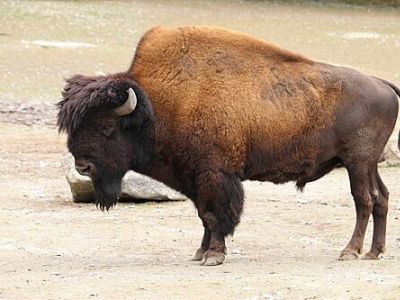M-BOBI-AT-Wood Bison

Wood Bison
Bos bison athabascae
- Phylum: Craniata
- Class: Mammalia
- Order: Artiodactyla
- Family: Bovidae
The wood bison (Bison bison athabascae) or mountain bison (often called the wood buffalo or mountain buffalo), is a distinct northern subspecies or ecotype of the American bison.
General Information
Key Habitat Features
Graze in grass and sedge meadows, wetland associated meadows, shrub lands and dry grasslands.
Winter grazing in wet meadows with sedges and grasses as winter grazing habitat; summer grazing in meadows that contain slough sedge, northern reed-grass and/or willow
Meadow-associated deciduous pine forests used for resting, ruminating, thermal protection and foraging at various time throughout the year. Larger meadows selected during the calving season.
Objectives
Retain habitat viability and connectivity.
Ensure that activities do not disrupt behaviour of adult females and young during the calving season.
Maintain desired plant communities and key habitat features.
Planning and Operational Measures
NOTE: EIMS guidance only applies to Etthithun and Nordquist herds.
All Activities
Identify key habitat features using appropriate measures (i.e. QP direction, desktop review, field confirmation, etc) and plan activities within the operating area accordingly.
Time works such that they occur outside of the critical timing window.
Apply the appropriate survey and setback requirements for WHFs within identified habitat. (Refer to section 1.9 of the EPMG for additional guidance on WHFs).
NOTE: EIMS guidance only applies to Etthithun and Nordquist herds.
All Activities
Undertake construction and operation of oil and gas activities in a manner that minimizes impacts to desired plant communities and key habitat features.
Timing considerations when working within identified habitat:
Avoid disturbance and/or clearing activities during the critical timing window from April 15 to July 15.
Linear Features
All
Avoid creation of linear features within known birthing areas.
Upon completion of the activity, undertake the following measures to encourage re-establishment of the pre-disturbance ecological trajectory:
deactivate unnecessary access corridors,
undertake measures to control access,
promote natural or assisted regeneration.